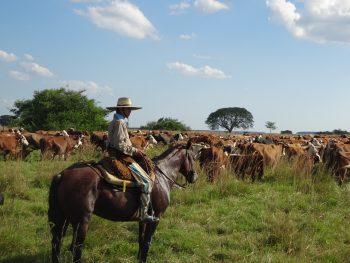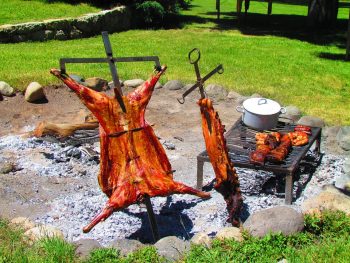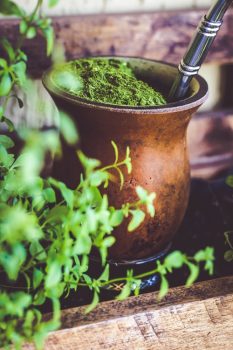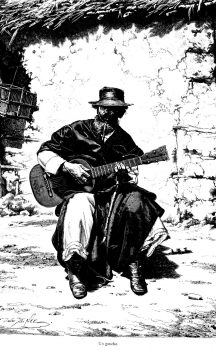The Gaucho: Key Figure of the Argentinean Culture Posted by Anais on Jan 20, 2020 in Uncategorized
The gaucho could be defined as the Argentinean cowboy, a legendary figure well-known for their horse riding, cattle rearing, and living as a nomad of the pampas (grassy steppes).
The concept of the gaucho spans hundreds of years, stemming from the colonization of the Southern Cone by the Spanish empire and the mixture of European and indigenous cultures that followed.
The traditional image of the gauchos—wearing sombreros (hats), bombachas (loose trousers), and various tools of their trade—can be seen on many souvenirs when going all around cities like Buenos Aires.
However, the traces of gaucho culture can be found deeply in Argentina’s folk music, cuisine, and literature. Let’s check some of them.
Chacarera, malambo, milonga…
The musical repertoire of the gauchos has left a big mark on Argentina’s cultural landscape with their characteristic guitars, lively accordions, and powerful voices.
Musical styles like chacarera, malambo, and milonga may be heard not just on the countryside, but also on the outskirts of many cities and towns. That is the reason why some of their musical traits had had such an influence on the country’s most famous genre: the tango.
https://www.youtube.com/watch?v=anktaszpvOQ
Se apagó el querer
luego la pasión
se llenó de olvido
el hontanar del amor.
Como imaginar
que la libertad
no tiene sentido
si a mi lado no estás.
Cuando caiga el sol
al atardecer
echaré de menos
el calor de tu piel.
Llevaré en mi pecho
todo lo vivido
y aunque con olvido
hayas pagado mi amor.
Intenté olvidar
todo entre los dos
pero no se tapa
con las manos el sol.
Late, corazón,
no calles tu voz
largo es el camino
pa’l que carga un dolor.
Sueño de un amor
vivimos los dos
ya se ha vuelto polvo
dentro del corazón.
The asado and the mate
When talking about food, el asado (barbecue) and la yerba mate are both crucial to the gauchos.
As cattle wranglers, their diet has consisted mainly of beef and the various ways it could be cooked outdoors on live coals. Meanwhile, the tea known as mate has been giving a boost of much needed energy to the rural populations of the Southern Cone for generations.
The idea of cooking meat on embers is so ingrained everywhere in Argentina that even urban houses come equipped with quinchos (a place to make barbecues) in order to set up gatherings with friends and family every other weekend around deliciously grilled meat. A remnant of how gauchos liked to gather and partake of a well-deserved meal.
On the other hand, mate is a fixture of every household. No picnic or social meeting in Argentina is complete without a thermos filled with hot water, the traditional porongo (a calabash to drink mate in), the bombilla (a metal drinking straw), and a load of mate leaves (notice that mate could refer to the beverage itself as well as the container in which it is kept.) All those implements originated from gaucho culture.
Martín Fierro, the quintessential gaucho
What is known as literatura gauchesca (gaucho literature) is an established genre within Latin-American literature that attempts to recreate the way of thinking and the lifestyle of the mythical cowboys.
The most famous narrative poem involving gaucho culture is Martín Fierro, written by José Hernández in 1872, which tells about a humble worker of the pampas who fell victim to social injustice. So important is this character that it has been called el emblema de la argentinidad (the emblem of Argentinean culture).
In brief, understanding the gaucho culture is key to appreciate the cultural traits that are part of Argentina today.

Build vocabulary, practice pronunciation, and more with Transparent Language Online. Available anytime, anywhere, on any device.







